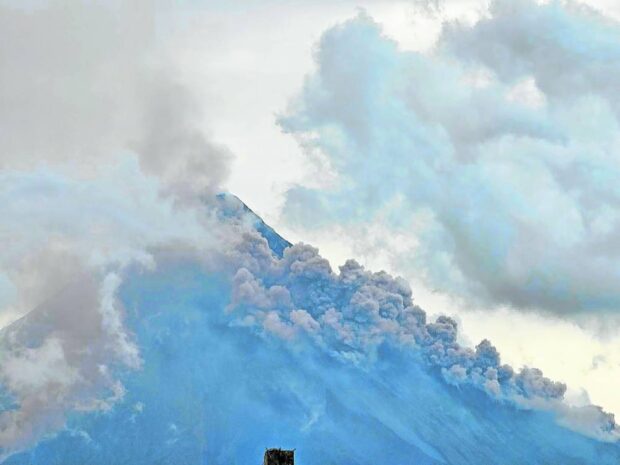
FILE PHOTO: Mayon Volcano continuously generates pyroclastic density currents and lava flow as seen in this photo taken at 5:40 p.m. on Monday, July 10, 2023, in Daraga, Albay. On July 22, the Philippine Institute of Volcanology and Seismology says Mayon Volcano had a “short-lived lava ejection” from its summit crater – a new manifestation of its unrest. (Contributed photo by DENNIS MIRABUENO)
MANILA, Philippines — The Philippine Institute of Volcanology and Seismology (Phivolcs) on Sunday recorded an increase in Mayon Volcano’s earthquakes but continued decrease in its rockfall events and sulfur dioxide emission.
Based on its 5 a.m. bulletin, Phivolcs said it monitored zero pyroclastic density currents (PDCs), higher volcanic earthquakes at 68, and lower rockfall events at 18 in Mayon over the last 24 hours.
Earlier, the agency likewise monitored no PDCs, lower quakes at 40, and higher rockfall events at 45.
Aside from rockfall events, Phivolcs said that sulfur dioxide emission of Mayon, which remains under Alert Level 3, also dipped from 4,113 tons on July 28 to 2,356 tons on July 29.
The agency reported that Mayon’s slow effusion of lava flow stayed at 2.8 kilometers (km) along Mi-isi Gully and reached 3.4 km along Bonga Gully, while lava dome collapse on both gullies extended to 600 meters along Basud Gully.
Phivolcs warned residents that rockfalls, landslides, avalanches, ballistic fragments, lava flows, and moderate-sized explosions might occur in areas near Mayon.